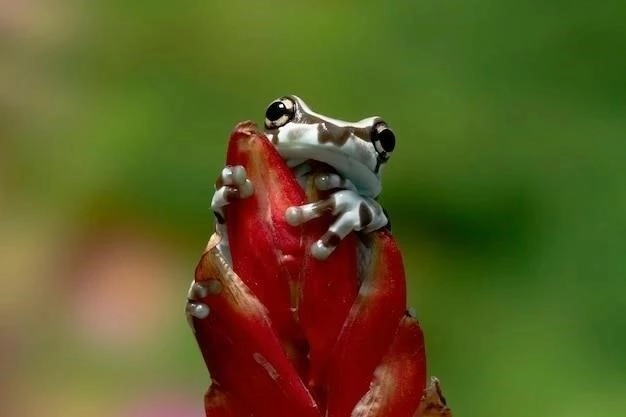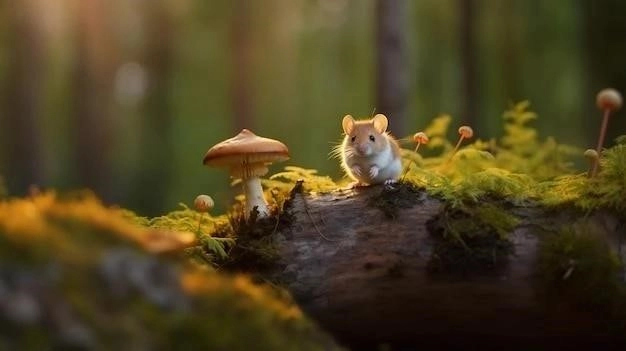Ive always been fascinated by animals, big and small. Recently, I dove deep into the world of miniature creatures, and let me tell you, its an incredibly diverse and fascinating area! These animals might be small, but they are mighty in their own right, showcasing incredible adaptations and survival strategies. Heres a glimpse into the miniature marvels I learned about⁚
The Brookesia Micra Chameleon
My journey began with the Brookesia Micra, a chameleon species discovered in Madagascar. Can you believe an adult can comfortably perch on the head of a matchstick? I was astonished to learn that these tiny reptiles, measuring a mere inch long, are among the smallest vertebrates on Earth.
The Bee Hummingbird
Next, I discovered the Bee Hummingbird, a creature so tiny its often mistaken for an insect. Native to Cuba, this bird is a marvel of nature. I watched videos of it flitting between flowers, its iridescent feathers shimmering in the sunlight. Weighing less than a dime, this tiny bird can visit over 1٫000 flowers a day٫ beating its wings an astounding 80 times per second!

The Paedophryne Amauensis Frog
My exploration led me to the Paedophryne amauensis, the worlds smallest known vertebrate. I was amazed to learn that this tiny frog, measuring a mere 7.7 millimeters, was only discovered in 2009 in the rainforests of Papua New Guinea. Its call, a series of high-pitched chirps, is surprisingly loud for such a tiny creature.

The Etruscan Shrew
Moving away from the realm of reptiles and amphibians, I encountered the Etruscan Shrew, a contender for the worlds smallest mammal by weight. I was captivated by its story — this tiny creature, weighing less than a penny, has a heart rate of 25 beats per second! To sustain its incredibly fast metabolism, it needs to consume more than its body weight in food every day.
The Bumblebee Bat
Finally, I learned about the Bumblebee Bat, also known as Kittis Hog-nosed Bat. Found in Thailand and Myanmar, this bat is the worlds smallest mammal by size. I was stunned to learn that this tiny creature, with a wingspan of about six inches, roosts in caves, often sharing space with other bat species. Sadly, habitat loss and human disturbance threaten its survival.
My journey through the world of the smallest animals was truly eye-opening. These creatures, often overlooked, play vital roles in their ecosystems. Their stories highlight the incredible diversity of life on Earth and the importance of protecting even the smallest among us.
As I delved deeper, I became captivated by the challenges these miniature marvels face. Their small size makes them vulnerable to predators, and habitat loss poses a significant threat. I decided to focus my attention on creating a miniature garden sanctuary designed specifically for small creatures.
I started by researching native plants that attract insects, providing a natural food source for my tiny guests. I planted miniature varieties of wildflowers, creating a colorful mosaic that would attract pollinators like bees and butterflies. I even added a shallow birdbath, just an inch deep, filled with fresh water and a few pebbles for perching.
Observing my miniature garden became a daily ritual. I was amazed by the activity I witnessed. Tiny spiders spun delicate webs between blades of grass, and I watched with delight as a hummingbird, no bigger than my thumb, sipped nectar from the miniature blossoms. One evening, as the sun began to set, I even spotted a tiny shrew darting between the plants, its nose twitching as it searched for insects.
Creating this miniature sanctuary wasnt just about attracting small creatures; it was about fostering a deeper appreciation for the often-overlooked wonders of the natural world. It was about recognizing the importance of even the smallest creatures and taking action to protect them. And it was about finding joy in the simple act of observation, of slowing down and appreciating the beauty that surrounds us, no matter how small.
Inspired by my miniature gardens success, I decided to take my miniature animal exploration one step further. Id heard about the fascinating world of ant farms, but instead of buying a pre-made one, I decided to create my own. I figured it would be a fantastic way to observe these tiny architects up close.
I ordered a special gel ant habitat online. It arrived as a flat, transparent container filled with a nutrient-rich blue gel that would serve as both food and shelter for the ants. I was a bit apprehensive about collecting the ants myself, so I enlisted the help of my nature-loving friend, Sarah. We decided to search for ants in a nearby park, armed with a magnifying glass and a small container.
We spent a good hour carefully observing different ant trails, fascinated by their organized movements and teamwork. Finally, we found a small colony of black ants nesting under a rock. Using a spoon, we gently scooped up a dozen or so ants, careful not to harm them, and placed them in our container.
Back home, I carefully transferred the ants into their new gel home. At first, they seemed a bit disoriented, but it wasnt long before they started exploring their new surroundings. Within hours, they began their intricate tunneling work, their tiny bodies moving tirelessly as they carved out intricate pathways through the blue gel.
Watching the ant colony thrive became a source of daily fascination. I was amazed by their tireless work ethic, their intricate communication system, and their ability to function as a cohesive unit. I even gave names to a few of the ants I could recognize – there was Hercules, the largest worker ant, and Scout, who was always venturing out to explore the furthest corners of the habitat.
My foray into the world of miniature animals, from my backyard garden sanctuary to my thriving ant colony, has been an incredibly rewarding experience. Its opened my eyes to the often-unseen wonders that surround us and instilled in me a deeper appreciation for the interconnectedness of all living things, no matter how small.
My fascination with the miniature world didnt stop with ants. I became intrigued by the idea of creating a terrarium, a self-sustaining ecosystem enclosed in glass. I envisioned a lush, miniature rainforest teeming with tiny life.
I started by researching the ideal plants for a closed terrarium, focusing on those that thrive in high humidity and low light conditions. I chose a variety of mosses, ferns, and air plants, each with unique textures and shades of green. I loved the idea of incorporating a carnivorous plant, so I added a small Venus flytrap, hoping it might attract and trap some unsuspecting fungus gnats.
Finding the perfect glass container was a treasure hunt in itself. I finally settled on a vintage glass cookie jar I found at a flea market, its rounded shape and airtight lid ideal for maintaining the humid environment my terrarium needed.
Creating the terrarium was a meditative process. I layered pebbles, activated charcoal, and a special terrarium soil mix, carefully arranging the plants to create a visually pleasing composition. I misted the terrarium with filtered water, sealed it with the lid, and placed it on a shelf where it could receive indirect sunlight.
Over the next few weeks, I eagerly observed my miniature rainforest come to life. Condensation formed on the glass, creating a miniature water cycle that kept the plants hydrated. The mosses carpeted the soil in a lush, emerald green, and the ferns unfurled their delicate fronds. To my delight, the Venus flytrap even caught a few tiny flies that found their way inside.
My terrarium became a source of endless fascination, a miniature world that reminded me of the intricate beauty and resilience of nature. It was a constant reminder that even in the smallest of spaces, life finds a way to flourish.
My latest miniature endeavor led me beyond my home and into the fascinating world of beekeeping. Id always been mesmerized by bees, these tiny creatures responsible for pollinating so much of the food we eat. However, living in an apartment building meant traditional beekeeping was out of the question. Thats when I discovered the world of mason bees, solitary bees that are perfect for urban dwellers like me.
I ordered a mason bee house online – a wooden structure with numerous nesting tubes where the bees could lay their eggs. I found a spot on my balcony facing east, ensuring the morning sun would warm the nesting tubes and give the bees a good start to their day. Next to the bee house, I planted a variety of flowering herbs – lavender, thyme, and rosemary – to provide a readily available source of nectar and pollen.
Spring arrived, and with it came the gentle hum of mason bees buzzing around my balcony. I watched in awe as they diligently collected pollen, their tiny bodies covered in a dusting of yellow. They would disappear into the nesting tubes, leaving behind a tiny mud plug to seal in their eggs and a supply of pollen for their future offspring.
Observing the mason bees taught me so much about their lifecycle and their importance as pollinators. I learned that unlike honeybees, mason bees are solitary creatures, each female responsible for building and provisioning her own nest. I was amazed by their dedication and efficiency as they tirelessly worked to ensure the survival of the next generation.
My miniature animal adventures have taken me on an incredible journey of discovery, opening my eyes to the often-unseen wonders of the natural world. From the bustling metropolis of my ant farm to the gentle hum of mason bees on my balcony, Ive come to appreciate the vital roles these tiny creatures play in our ecosystem. And Ive realized that fostering a connection with nature, no matter how small, can bring immense joy and a renewed sense of wonder to our lives.










